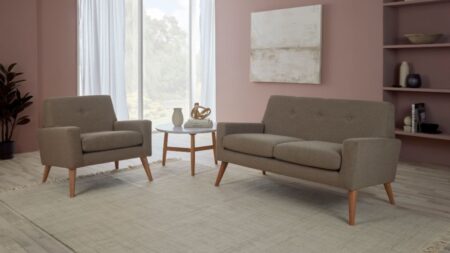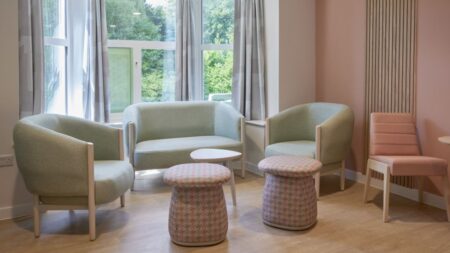A lesson in comfort – how furniture pieces can shape learning experiences
Jason Brown, director of design and development at Knightsbridge Furniture, discusses the thought behind designs for the education sector and the effect the pieces can have on individual and group learning

Knightsbridge’s Paxton range, made in collaboration with Peter Wall, offers soft, modular shapes that can be arranged to suit various layouts – ideal for breakout zones or flexible learning hubs where space may need to shift throughout the day
When it comes to spaces of learning, just how important is the comfort of students?
It seems obvious that comfort is key, but striking a balance between holding attention and relaxation is a consideration that must be taken into account.
Seating must be shaped and provide enough support, but not so much that posture and concentration is compromised.
As learning spaces become more collaborative, inclusive, and multi-functional, the furniture within them has had to evolve too.
Designing for learning isn’t just about what looks right, it’s about understanding how students interact with their environment, how that environment can adapt to different learning styles, and how the physical space can either support or hinder engagement.
In classrooms, lecture halls, group breakout spaces, or libraries, furniture sets the tone.
A rigid, uniform setup might subconsciously encourage formality and silence, whereas soft furnishings and dynamic layouts can signal openness and collaboration.
Designing for learning isn’t just about what looks right, it’s about understanding how students interact with their environment, how that environment can adapt to different learning styles, and how the physical space can either support or hinder engagement
Choosing the right pieces can spark imagination, stimulate productivity, and even encourage wellbeing.
When students feel physically at ease, they’re more likely to focus, participate, and engage with both their peers and the content being taught.
A soft touch
Upholstered ranges offer a softer approach to educational spaces, where traditional desks and chairs may not always be the answer.
These lounge-style pieces support informal group learning, quiet reflection, or collaborative activities.
Of course, soft seating isn’t the solution for every space. In more-traditional classrooms or multi-purpose environments, practicality and space saving become vital.
Furniture design in educational settings must also factor in more than just students, though.
When students feel physically at ease, they’re more likely to focus, participate, and engage with both their peers and the content being taught
Teachers, support staff, and even parents who visit for meetings or events engage with these spaces, too.
Versatile seating that can cater to a wide age range and physical needs is therefore essential.
As a contract manufacturer, Knightsbridge ensures its designs meet these varied demands without losing the cohesion or aesthetic appeal of the space as a whole.

The firm’s Buzz range, designed by Charlie Fowler, with its gently-curved arms and welcoming profile, brings a residential feel to student lounges and sixth-form areas
The test of time
Another element that can’t be overlooked is durability.
Educational settings are busy, high-traffic environments and furniture needs to withstand constant use, movement, cleaning and even potential mischief!
In the education sector, where budgets are often carefully allocated, it is important to make investments that truly stand the test of time. That’s why finding a manufacturer which offers a furniture refurbishment service can be such a valuable asset.
Rather than replacing pieces entirely, schools, colleges, and universities can protect their investment in high-quality furniture by giving existing items a new lease of life.
Whether it’s refreshing fabrics, updating finishes, or repairing wear and tear, a reliable refurbishment service allows educational settings to maintain a consistent, professional look while maximising value and sustainability.
Good furniture shouldn’t distract – it should support. It should adapt to the space, serve its users without fuss, and help create an environment where learning can thrive
However, a well-designed piece of furniture will provide service for a while before needing any refurbishment.
For example, rotationally-moulded pieces are ideal as they can provide the contoured shape for comfort, durability due to the strong materials, and easy to maneuver thanks to their lightweightness.
As they become part of the learning ecosystem, they will provide years of use before showing major signs of wear and tear.
At Knightsbridge, that philosophy is embedded in the development of every product.
Good furniture shouldn’t distract – it should support. It should adapt to the space, serve its users without fuss, and help create an environment where learning can thrive.
Whether it’s stacking chairs ready for the next lesson, or a modular sofa that invites collaboration, every detail makes a difference.
A good education setting can encourage a sense of belonging, can enhance acoustics, influence posture, increase focus, and play a role in student wellbeing.
With mental health and concentration levels a growing focus in education, furniture that creates calm, comfortable and flexible environments is more relevant than ever.
In learning environments, comfort isn’t a luxury, it should be seen as a tool to assist learning.
With thoughtful design, the right furniture can help shape, not just the room, but the experience within it.
